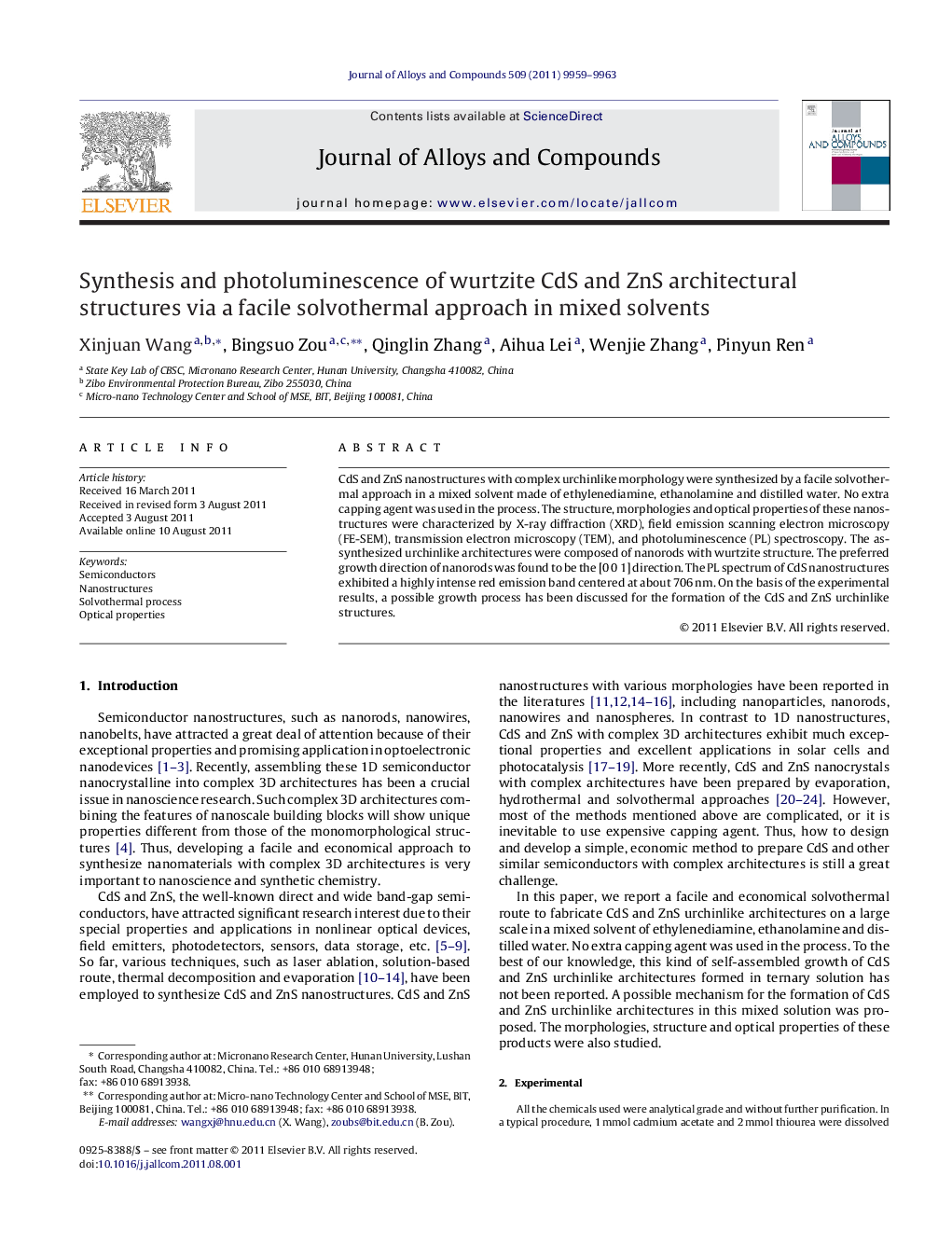| Article ID | Journal | Published Year | Pages | File Type |
|---|---|---|---|---|
| 1616883 | Journal of Alloys and Compounds | 2011 | 5 Pages |
CdS and ZnS nanostructures with complex urchinlike morphology were synthesized by a facile solvothermal approach in a mixed solvent made of ethylenediamine, ethanolamine and distilled water. No extra capping agent was used in the process. The structure, morphologies and optical properties of these nanostructures were characterized by X-ray diffraction (XRD), field emission scanning electron microscopy (FE-SEM), transmission electron microscopy (TEM), and photoluminescence (PL) spectroscopy. The as-synthesized urchinlike architectures were composed of nanorods with wurtzite structure. The preferred growth direction of nanorods was found to be the [0 0 1] direction. The PL spectrum of CdS nanostructures exhibited a highly intense red emission band centered at about 706 nm. On the basis of the experimental results, a possible growth process has been discussed for the formation of the CdS and ZnS urchinlike structures.
Graphical abstractWurtzite CdS and ZnS urchinlike architectures were synthesized by a facile mixed solvothermal process.Figure optionsDownload full-size imageDownload as PowerPoint slideHighlights► CdS and ZnS nanostructures with complex urchinlike morphology were synthesized by a facile solvothermal approach in a mixed solvent made of ethylenediamine, ethanolamine and distilled water. ► These urchinlike architectures were composed of arranged nanorods with wurtzite structure. ► The PL spectrum of the CdS urchinlike architecture displays a very strong red emission band centered at about 706 nm.
